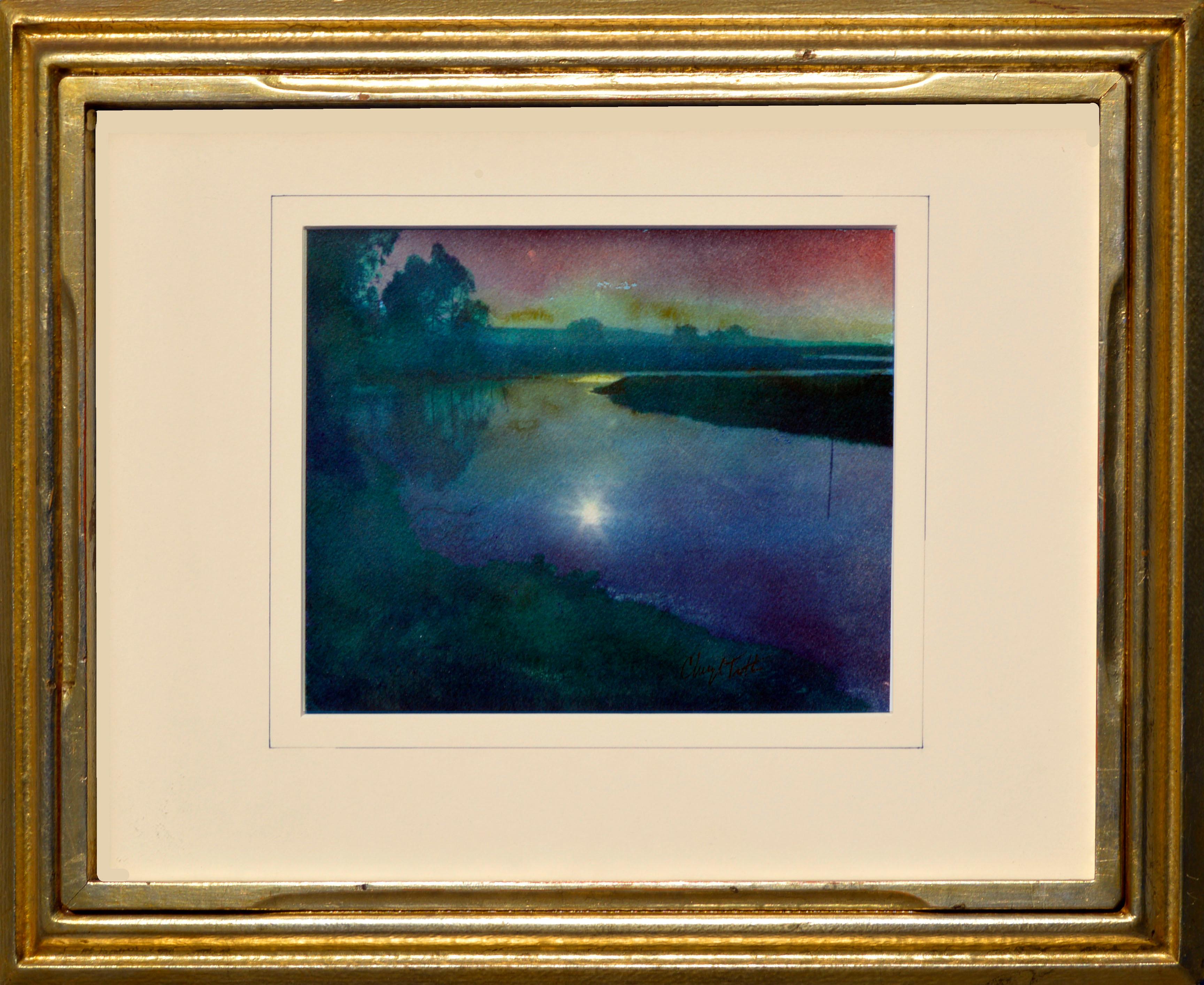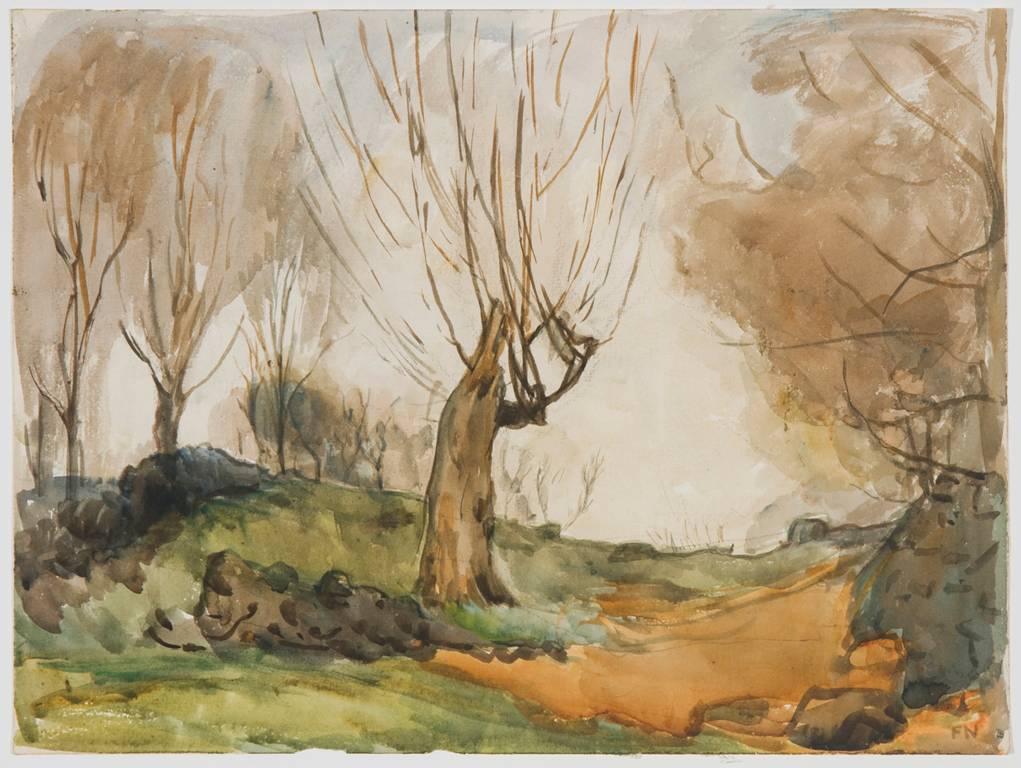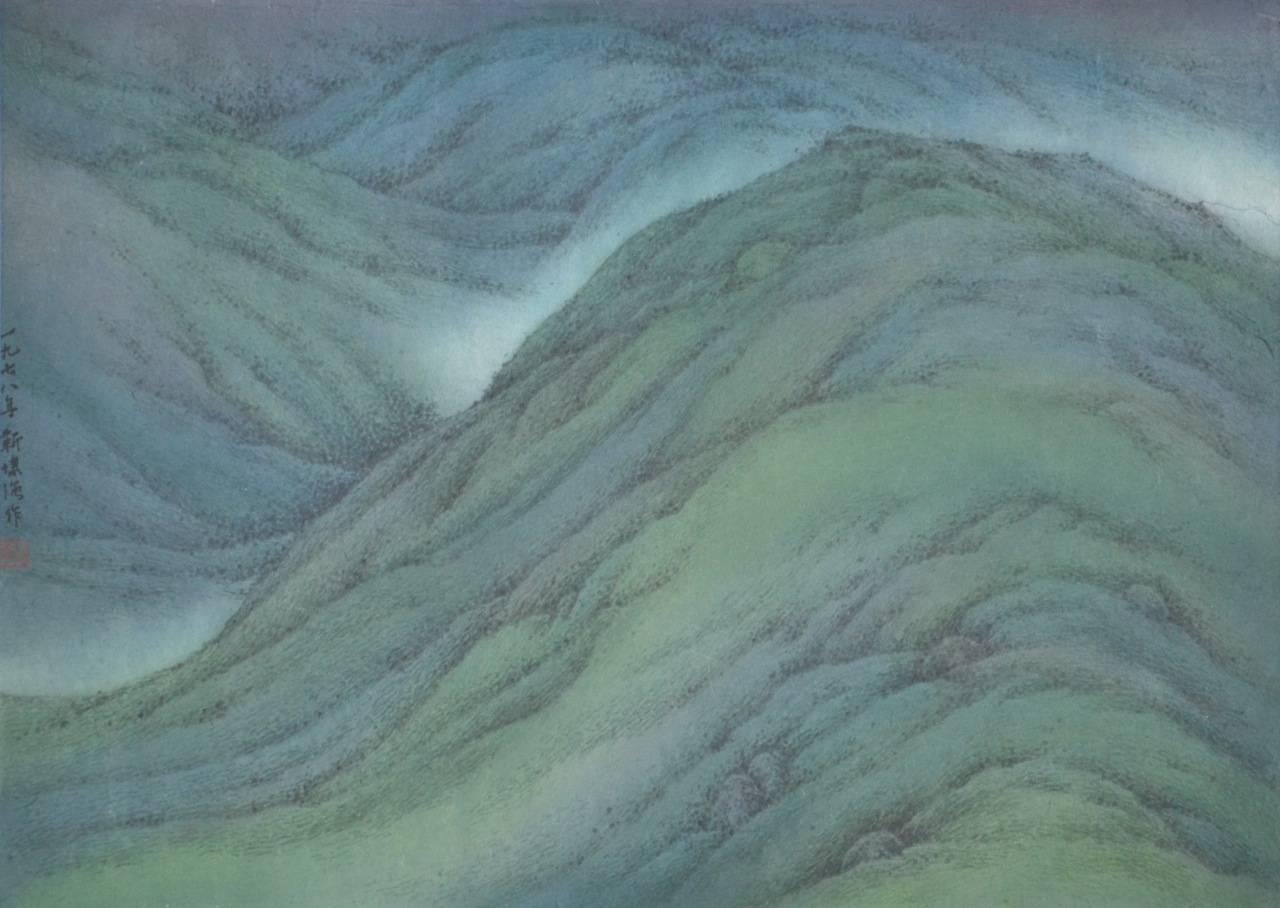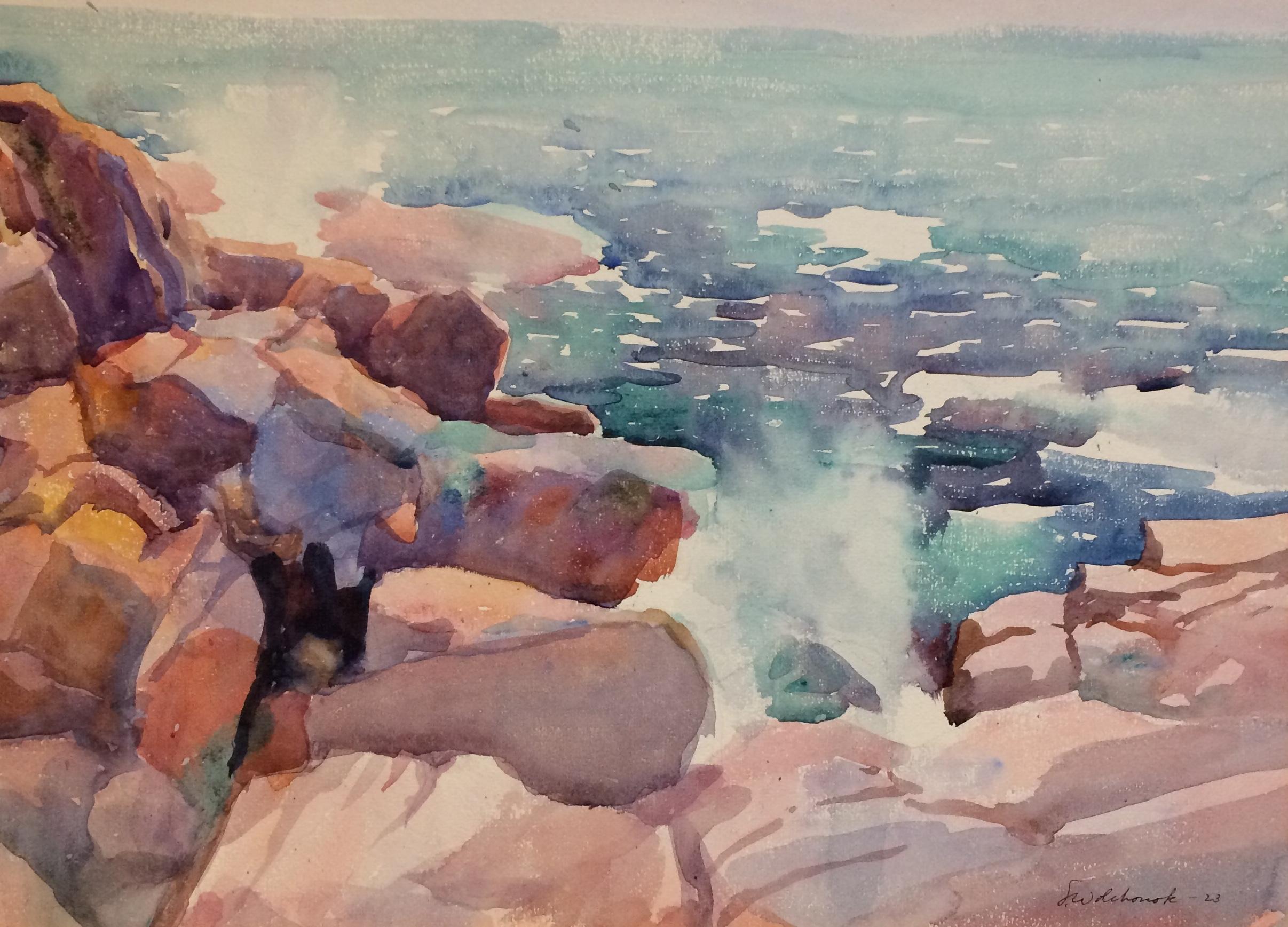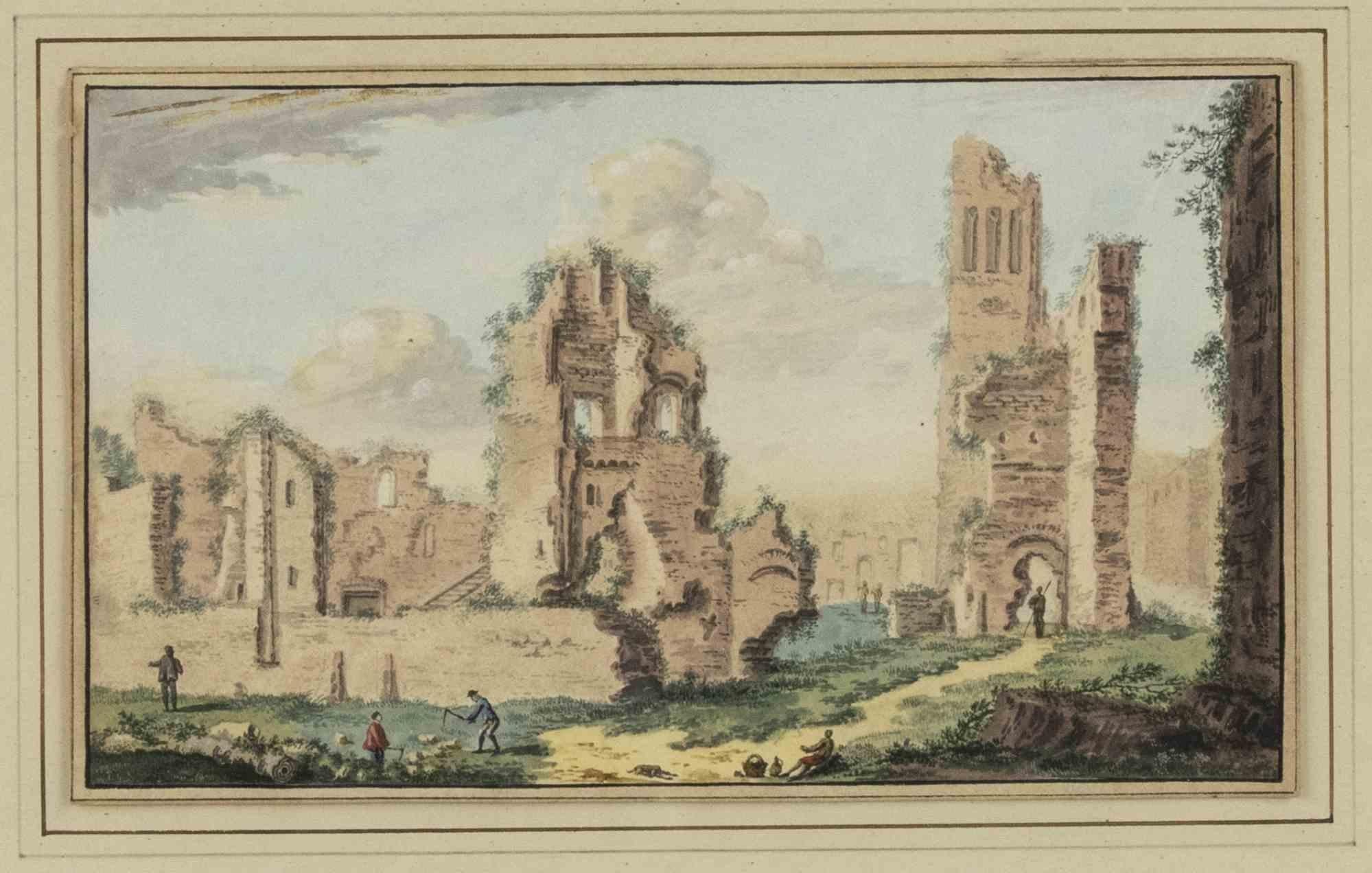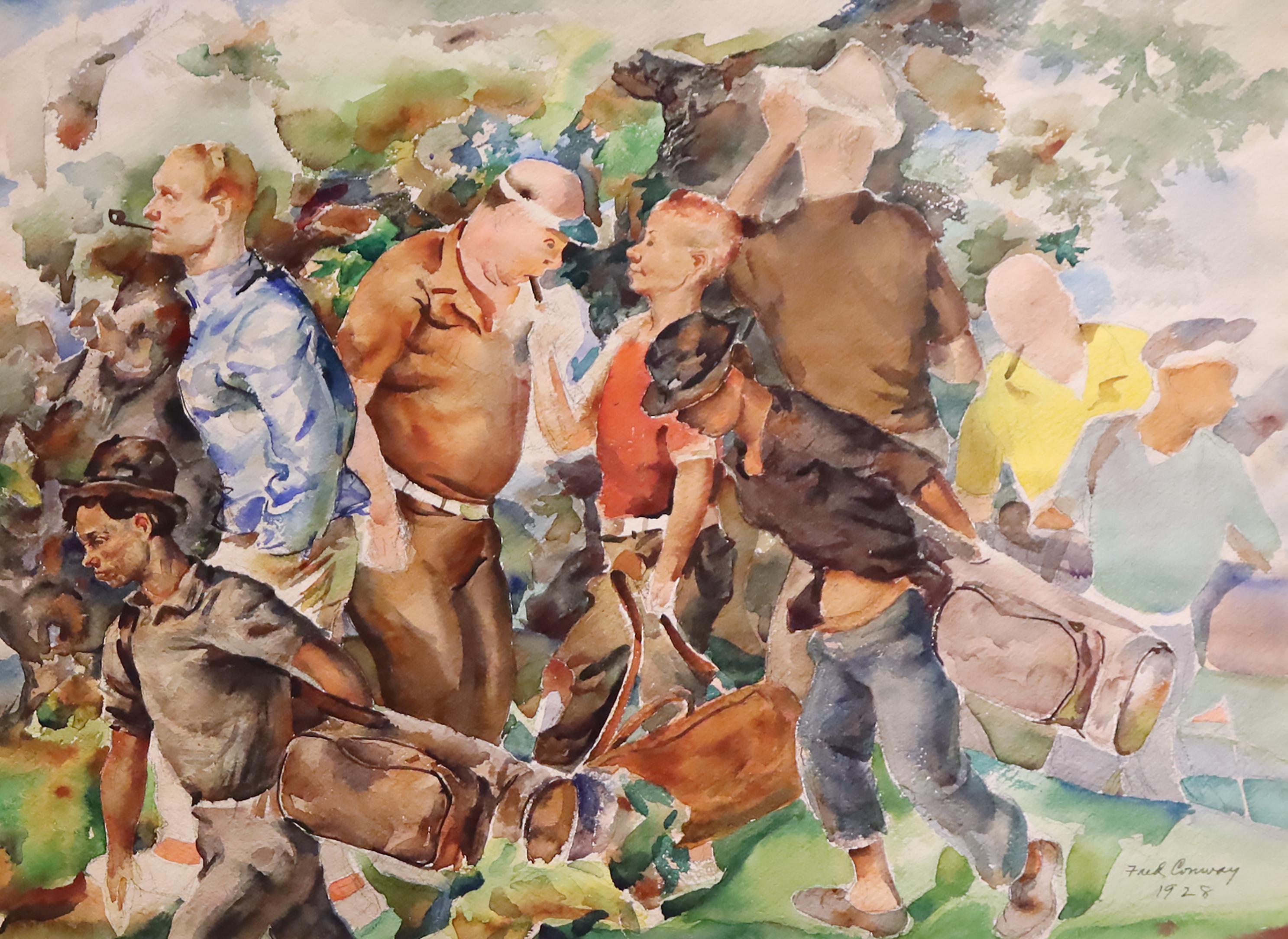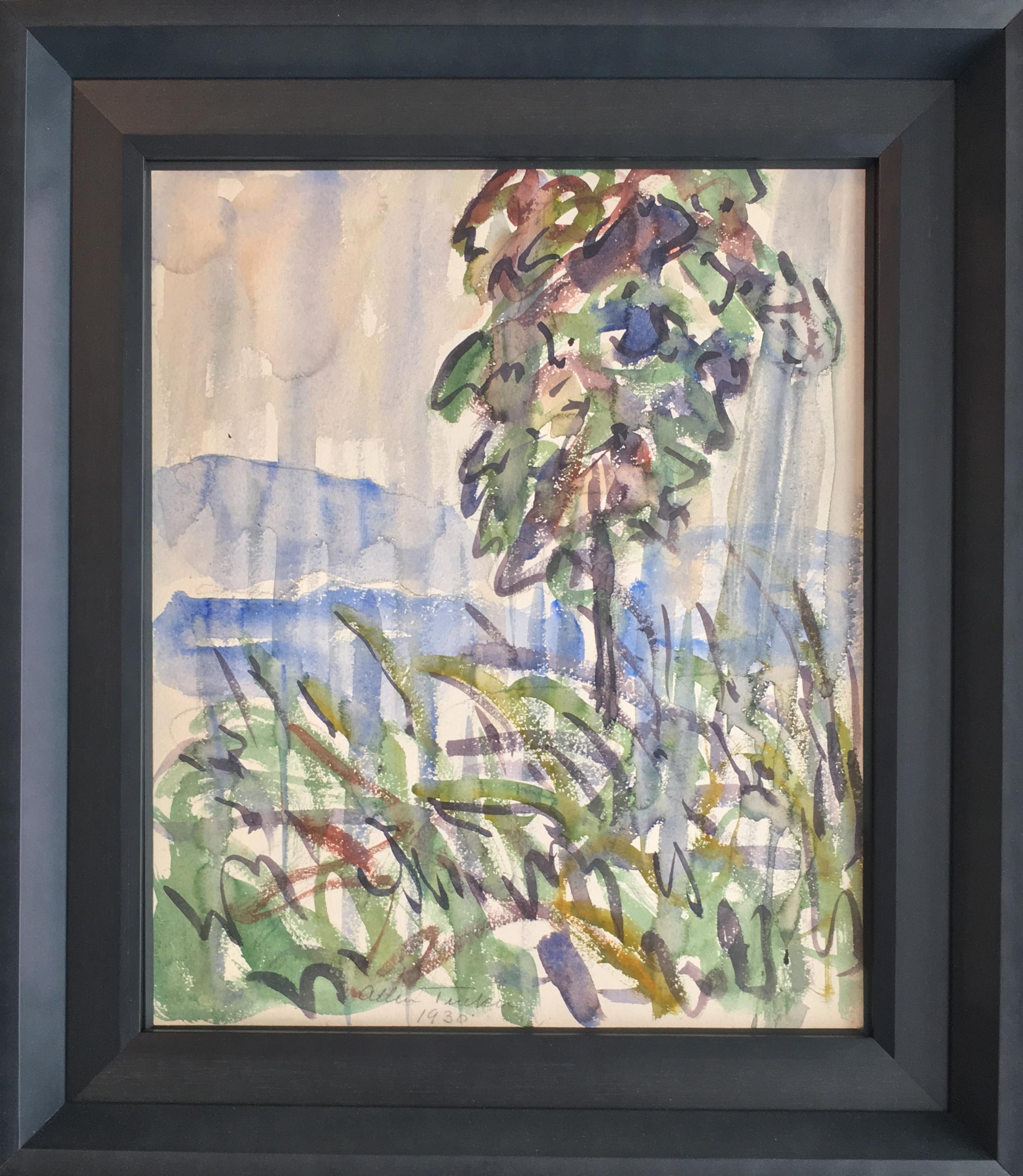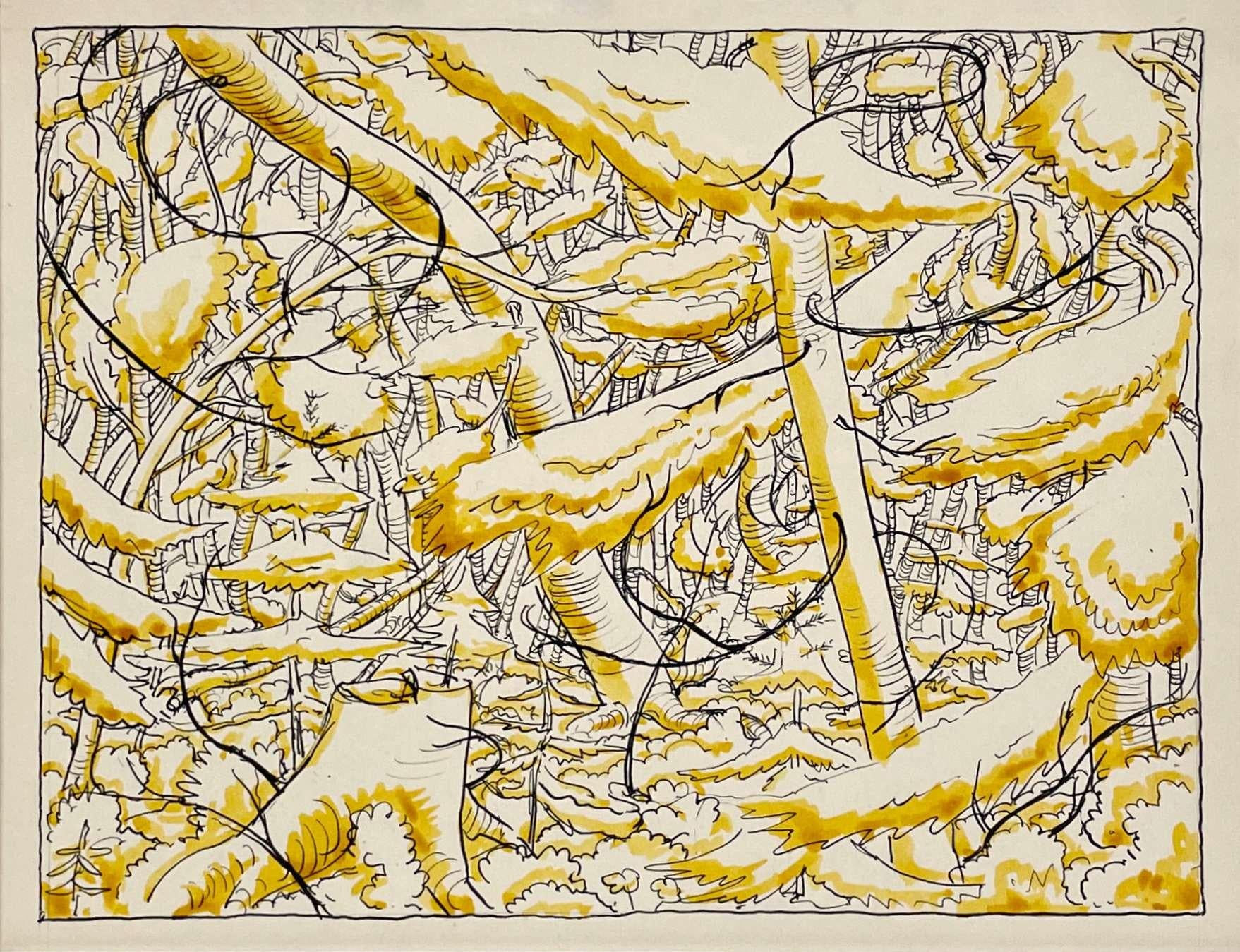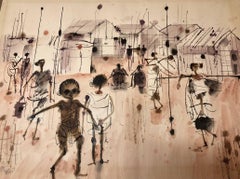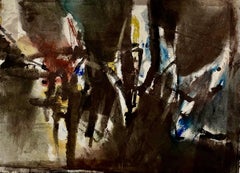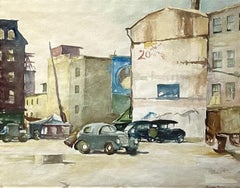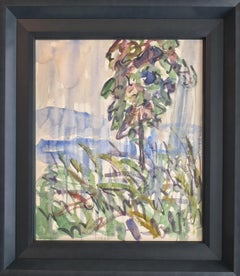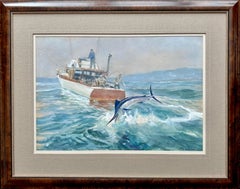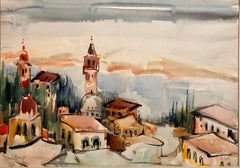
1940s Israeli Modernist Watercolor Painting Harbor Landscape Bezalel School
View Similar Items
Want more images or videos?
Request additional images or videos from the seller
1 of 9
Mordechai Avniel1940s Israeli Modernist Watercolor Painting Harbor Landscape Bezalel School
About the Item
- Creator:Mordechai Avniel (1900-1989, Belarusian)
- Dimensions:Height: 24.25 in (61.6 cm)Width: 30 in (76.2 cm)
- Medium:
- Movement & Style:
- Period:
- Condition:size includes mat. minor wear commensurate with age.
- Gallery Location:Surfside, FL
- Reference Number:1stDibs: LU3822925401
About the Seller
4.9
Platinum Seller
These expertly vetted sellers are 1stDibs' most experienced sellers and are rated highest by our customers.
Established in 1995
1stDibs seller since 2014
1,541 sales on 1stDibs
Typical response time: 1 hour
More From This SellerView All
- Djibouti, African Landscape Original Israeli Watercolor Cityscape PaintingLocated in Surfside, FLSubject: Cityscape, signed in Hebrew Medium: Watercolor Surface: Paper Shmuel Katz (Hebrew: שמואל כ"ץ) (August 18, 1926 – March 26, 2010) was an Israeli artist, illustrator, and car...Category
20th Century Modern Landscape Drawings and Watercolors
MaterialsPaper, Watercolor
- Modernist Abstract Expressionist Watercolor Painting Bauhaus Weimar Pawel KontnyBy Pawel KontnyLocated in Surfside, FLAbstract watercolor composition bearing the influence of the earlier color-block compositions of Paul Klee. Pawel August Kontny, (Polish-German-American artist) He was born in Laurahuette, Poland, in 1923, the son of a wealthy pastry shop owner. In 1939 he began studying architecture in Breslau where he was introduced to the European masters and to the work of some of the German Expressionists, soon afterward banned as "degenerate artists" and removed from museums throughout Germany by the Nazi regime. His studies were interrupted by World War II. Drafted into the German army, traveling in many countries as a soldier, he sketched various landscapes but in 1945, he was captured and held as a prisoner of war in Italy. After the war, he studied at the Union of Nuremberg Architects to help design buildings to replace ones destroyed in the war. He recorded his impressions of the local population and the landscapes through his watercolors and drawings. Pawel Kontny thereafter moved to Nuremberg, Germany, becoming a member of the Union of Nuremberg Architects and helping to rebuild the city's historic center. He soon decided to concentrate on his professional art career. He married Irmgard Laurer, a dancer with the Nuremberg Opera. Pavel Kontny 's career as an artist was launched with his participation in an all German exhibition, held at the Dusseldorf Museum in 1952. He held one-man shows in Germany, Switzerland and the United States. During his trip to the United States in 1960, Kontny became instantly enamored with Colorado, and decided to relocate to Cherry Hills with his wife and two children. He quickly established himself in the local art community, being affiliated for a time with Denver Art Galleries and Saks Galleries. His subject matter became the Southwest. During this time he received the Prestigious Gold Medal of the Art Academy of Rome. His extensive travel provided material for the paintings he did using his hallmark marble dust technique. he also worked equally in pastel, watercolor, charcoal and pencil-and-ink. in a style which merged abstraction and realist styles, influenced by Abstract Expressionist painting and South Western American landscapes. This one bears the influence of Sam Francis. In the early 1960s he was one of only a few European-born professional artists in the state, a select group that included Herbert Bayer (1900-1985), a member of the prewar Bauhaus in Weimar and Dessau, Germany, and Roland Detre (1903-2001), a Hungarian modernist painter. As a Denver, Colorado resident, Pavel Kontny exhibited at galleries and museums throughout the United States, Germany and Japan. There, he was inspired by frequent trips to Native American pueblos in the Southwest, as well as by the study of the Plains Indians of Montana and Wyoming. Over the years Kontny had a number of students and generously helped young artist by hosting exhibitions at his Cherry Hills home. For many years he generously donated his paintings to support charitable causes in Denver. Influences during his European years included German pastelist C.O. Muller, German Informel painter Karl Dahmen and Swiss artist, Hans Erni. In the early 1950s his painting style showed the influence of the Die Brücke (The Bridge), a group of German expressionist artists formed in Dresden in 1905 who had a major impact on the evolution of modern art in the twentieth century in Germany. By the middle of the decade his style incorporated more referential abstraction and total abstraction, resulting in part from his study of Hans Hartung, a German artist based in Paris who exhibited his gestural abstract work in Germany. The American moon landing in 1969 inspired Paul Kontny...Category
20th Century American Modern Abstract Drawings and Watercolors
MaterialsWatercolor, Archival Paper
- Modernist Abstract Expressionist Watercolor Painting Bauhaus Weimar Pawel KontnyBy Pawel KontnyLocated in Surfside, FLAbstract watercolor composition bearing the influence of the earlier color-block compositions of Paul Klee. Pawel August Kontny, (Polish-German-American artist) He was born in Laurahuette, Poland, in 1923, the son of a wealthy pastry shop owner. In 1939 he began studying architecture in Breslau where he was introduced to the European masters and to the work of some of the German Expressionists, soon afterward banned as "degenerate artists" and removed from museums throughout Germany by the Nazi regime. His studies were interrupted by World War II. Drafted into the German army, traveling in many countries as a soldier, he sketched various landscapes but in 1945, he was captured and held as a prisoner of war in Italy. After the war, he studied at the Union of Nuremberg Architects to help design buildings to replace ones destroyed in the war. He recorded his impressions of the local population and the landscapes through his watercolors and drawings. Pawel Kontny thereafter moved to Nuremberg, Germany, becoming a member of the Union of Nuremberg Architects and helping to rebuild the city's historic center. He soon decided to concentrate on his professional art career. He married Irmgard Laurer, a dancer with the Nuremberg Opera. Pavel Kontny 's career as an artist was launched with his participation in an all German exhibition, held at the Dusseldorf Museum in 1952. He held one-man shows in Germany, Switzerland and the United States. During his trip to the United States in 1960, Kontny became instantly enamored with Colorado, and decided to relocate to Cherry Hills with his wife and two children. He quickly established himself in the local art community, being affiliated for a time with Denver Art Galleries and Saks Galleries. His subject matter became the Southwest. During this time he received the Prestigious Gold Medal of the Art Academy of Rome. His extensive travel provided material for the paintings he did using his hallmark marble dust technique. he also worked equally in pastel, watercolor, charcoal and pencil-and-ink. in a style which merged abstraction and realist styles, influenced by Abstract Expressionist painting and South Western American landscapes. This one bears the influence of Sam Francis. In the early 1960s he was one of only a few European-born professional artists in the state, a select group that included Herbert Bayer (1900-1985), a member of the prewar Bauhaus in Weimar and Dessau, Germany, and Roland Detre (1903-2001), a Hungarian modernist painter. As a Denver, Colorado resident, Pavel Kontny exhibited at galleries and museums throughout the United States, Germany and Japan. There, he was inspired by frequent trips to Native American pueblos in the Southwest, as well as by the study of the Plains Indians of Montana and Wyoming. Over the years Kontny had a number of students and generously helped young artist by hosting exhibitions at his Cherry Hills home. For many years he generously donated his paintings to support charitable causes in Denver. Influences during his European years included German pastelist C.O. Muller, German Informel painter Karl Dahmen and Swiss artist, Hans Erni. In the early 1950s his painting style showed the influence of the Die Brücke (The Bridge), a group of German expressionist artists formed in Dresden in 1905 who had a major impact on the evolution of modern art in the twentieth century in Germany. By the middle of the decade his style incorporated more referential abstraction and total abstraction, resulting in part from his study of Hans Hartung, a German artist based in Paris who exhibited his gestural abstract work in Germany. The American moon landing in 1969 inspired Paul Kontny...Category
20th Century American Modern Abstract Drawings and Watercolors
MaterialsWatercolor, Archival Paper
- Modernist Abstract Expressionist Watercolor Painting Bauhaus Weimar Pawel KontnyBy Pawel KontnyLocated in Surfside, FLAbstract watercolor composition bearing the influence of the earlier color-block compositions of Paul Klee. Pawel August Kontny, (Polish-German-American artist) He was born in Laurahuette, Poland, in 1923, the son of a wealthy pastry shop owner. In 1939 he began studying architecture in Breslau where he was introduced to the European masters and to the work of some of the German Expressionists, soon afterward banned as "degenerate artists" and removed from museums throughout Germany by the Nazi regime. His studies were interrupted by World War II. Drafted into the German army, traveling in many countries as a soldier, he sketched various landscapes but in 1945, he was captured and held as a prisoner of war in Italy. After the war, he studied at the Union of Nuremberg Architects to help design buildings to replace ones destroyed in the war. He recorded his impressions of the local population and the landscapes through his watercolors and drawings. Pawel Kontny thereafter moved to Nuremberg, Germany, becoming a member of the Union of Nuremberg Architects and helping to rebuild the city's historic center. He soon decided to concentrate on his professional art career. He married Irmgard Laurer, a dancer with the Nuremberg Opera. Pavel Kontny 's career as an artist was launched with his participation in an all German exhibition, held at the Dusseldorf Museum in 1952. He held one-man shows in Germany, Switzerland and the United States. During his trip to the United States in 1960, Kontny became instantly enamored with Colorado, and decided to relocate to Cherry Hills with his wife and two children. He quickly established himself in the local art community, being affiliated for a time with Denver Art Galleries and Saks Galleries. His subject matter became the Southwest. During this time he received the Prestigious Gold Medal of the Art Academy of Rome. His extensive travel provided material for the paintings he did using his hallmark marble dust technique. he also worked equally in pastel, watercolor, charcoal and pencil-and-ink. in a style which merged abstraction and realist styles, influenced by Abstract Expressionist painting and South Western American landscapes. This one bears the influence of Sam Francis. In the early 1960s he was one of only a few European-born professional artists in the state, a select group that included Herbert Bayer (1900-1985), a member of the prewar Bauhaus in Weimar and Dessau, Germany, and Roland Detre (1903-2001), a Hungarian modernist painter. As a Denver, Colorado resident, Pavel Kontny exhibited at galleries and museums throughout the United States, Germany and Japan. There, he was inspired by frequent trips to Native American pueblos in the Southwest, as well as by the study of the Plains Indians of Montana and Wyoming. Over the years Kontny had a number of students and generously helped young artist by hosting exhibitions at his Cherry Hills home. For many years he generously donated his paintings to support charitable causes in Denver. Influences during his European years included German pastelist C.O. Muller, German Informel painter Karl Dahmen and Swiss artist, Hans Erni. In the early 1950s his painting style showed the influence of the Die Brücke (The Bridge), a group of German expressionist artists formed in Dresden in 1905 who had a major impact on the evolution of modern art in the twentieth century in Germany. By the middle of the decade his style incorporated more referential abstraction and total abstraction, resulting in part from his study of Hans Hartung, a German artist based in Paris who exhibited his gestural abstract work in Germany. The American moon landing in 1969 inspired Paul Kontny...Category
20th Century American Modern Abstract Drawings and Watercolors
MaterialsWatercolor, Archival Paper
- Israeli Modernist Safed Synagogue Interior Folk Art Watercolor PaintingBy Zvi EhrmanLocated in Surfside, FLIn this piece the artist choice of colors is vibrant, and there is minimal blending of them. The artist takes a naive, Folk Art approach at rendering the subject simplifying the figu...Category
Mid-20th Century Modern Landscape Drawings and Watercolors
MaterialsPaper, Watercolor
- Israeli Modernist Watercolor Painting Jerusalem Landscape Bezalel School AvnielBy Mordechai AvnielLocated in Surfside, FLWatercolor painting of Old City of Jerusalem MORDECHAI AVNIEL Minsk, Belarus, b. 1900, d. 1989 Mordecai Dickstein (later Avniel) was born in 1900 in Minsk, present-day Belarus. He studied fine arts in Yekaterinburg, Russia (1913–19) and at the Bezalel Academy of Art and Design, Jerusalem (1923). Avniel immigrated to Palestine in 1921 where he first worked as a pioneer in citrus plantations near Petah Tikva. In 1923, at the urging of Boris Schatz, he went to Jerusalem to further his art studies at Bezalel. He later taught painting and sculpture at the school, and served a term as director of the Small Sculpture Section of the Sculpture Department (1924–28). From 1935 on, Avniel lived in Haifa. Avniel was also a lawyer and a founding partner of the Haifa firm Avniel, Salomon & Company. Avniel regularly showed his work in group exhibitions of the Painters and Sculptors' Association of Israel. He was awarded the Herman Struck Prize (1952), Tenth Anniversary Prize for Watercolours, Ramat Gan (1958), Histadrut Prize (1961), and First Prize Haifa Municipality (1977). He represented Israel at the 1958 Venice Biennale and the 1962 International Art Seminar at Fairleigh Dickinson University. Avniel was a member of the Artists' Colony in Safed and maintained a studio on Mount Carmel. Mordechai Avniel is best known for his deft and singular landscape work. His works are held in numerous museums and collections both in Israel and abroad, including the Metropolitan Museum, New York and the Carnegie Institute, Pittsburgh, PA. Avniel's manipulations of light and colour share much with those of compatriot artists Shimshon Holzman and Joseph Kossonogi. Education 1913-19 Art School of Katrinburg, Russia 1923 Bezalel School of Art, Jerusalem Selected exhibitions: 2004: Our Landscape: Notes on Landscape Painting in Israel, University of Haifa Art Gallery, Haifa (online catalogue) 1965: Mordechai Avniel Retrospective, Haifa Municipality Museum of Modern Art, Haifa 1964: Galerie Synthèse, Paris 1962: New York University, New York 1961: Rina Gallery of Modern Art, Jerusalem The Autumn Exhibition Rina Gallery, Jerusalem Artists: Dedi Ben Shaul, Lea Nikel, Yossef Zaritsky,Ephraim Fima Roytenberg, Zvi Meirovich, Aharon Kahana, Avigdor Stematsky, Mordechai Levanon, Yosl Bergner, Israel Paldi...Category
20th Century Modern Interior Drawings and Watercolors
MaterialsPaper, Watercolor
You May Also Like
- Untitled (Cars)Located in Los Angeles, CAThis painting is part of our exhibition America Coast to Coast: Artists of the 1940s. Untitled (Cars), 1940, watercolor on paper, signed and dated lower right, 15 x 18 1/2 inches, ...Category
1940s American Modern Drawings and Watercolor Paintings
MaterialsPaper, Watercolor
- The Rainstorm a watercolor by Allen TuckerBy Allen TuckerLocated in Hudson, NYSigned and dated "Allen Tucker 1930" lower left. Artwork measures 14" x 11 ¾" and framed 19" x 16 ½" x 2 ¼". Provenance: Gift from the artist to his friend Una Brage, USA/Switzerlan...Category
1930s Modern Landscape Drawings and Watercolors
MaterialsPaper, Watercolor
- Leaping Marlin (with fisherman on the boat Islander) by John WhorfBy John WhorfLocated in Hudson, NYJohn Whorf captures one of the thrilling moments of fishing in this watercolor – when the fish is on the line, but still trying to escape. One of the fastest fish in the world, marlin fishing...Category
1950s American Modern Animal Drawings and Watercolors
MaterialsWatercolor, Paper
- Original 70's Hand Painted Textile Design Gouache Green Shades on White PaperLocated in ALCOY/ALCOI, ESWe offer a small number of these original illustration designs by this design studio based in Alcoy (Spain), which could pair well or make group sets if buyers so desired. Designed t...Category
1970s Modern Landscape Drawings and Watercolors
MaterialsPaper, Gouache
$599 Sale Price35% Off - Vibrant Mexican Watercolor Painting - The Boat DockBy Armando SanchezLocated in Houston, TXColorful gouache of a boat dock by 20th Century artist Armando Sanchez from charming Mérida, Mexico. Signed lower right. Original artwork on paper displayed on a white mat with a g...Category
2010s Modern Landscape Drawings and Watercolors
MaterialsPaper, Watercolor, Gouache
- "Rail Yard" Urban Industrial WPA American Scene Drawing NYC Mid-CenturyBy Joseph SolmanLocated in New York, NY"Rail Yard" Urban Industrial WPA American Scene Drawing NYC Mid-Century. Initialed "JS" upper right Solman was a pivotal figure in the development of 20th century American art. He ...Category
1930s American Modern Landscape Drawings and Watercolors
MaterialsPaper, Gouache
Recently Viewed
View AllMore Ways To Browse
Education School
Company School Art
Paintings From 1940s
Philadelphia School
Russian School Painting
Modernist School Painting
Russian School Of Painting
Gallery Invitations
Israel Museum
Israeli Modern Paintings
New York Harbor Painting
Tel Aviv Museum
Israel Landscape
Drawings Of Israel
Israel Landscape Painting
Israeli Landscape Paintings
1940s Modernist Painting
Small Modernist Painting
